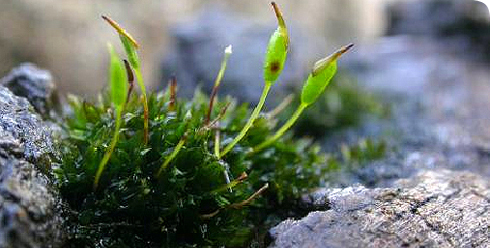Conservation
Zygodon forsteri is listed as Vulnerable in the 1995 Red Data Book of European Bryophytes (Söderström et al., 2005).
In Great Britain the species is classified as Endangered in the British Red Data Book (Church et al., 2001). It is protected under Schedule 8 of the Wildlife and Countryside Act, 1981 and has been a UK Biodiversity Action Plan (BAP) priority species since 1999 (Anon, 1999).
While higher than ever before, recent survey figures undoubtedly actually mask a worrying decline. Very detailed study of sites was not carried out in the past and monitoring since baselines have been established reveals a highly dynamic picture of losses and gains. While in some sites, such as Burnham Beeches, at the level of number of trees colonised these balance each other out, even there overall abundance and capsule production is declining and threats are increasing.
Ancient pollards support the majority, and all of the largest colonies of the moss and are being lost at an unsustainable rate at all British sites, through storm damage, infection and the effects of airborne pollutants. In addition, in all sites the moss is facing increasing levels of competition from other larger epiphytes. These are no longer suppressed by acid rain and similar pollutants, from which Z. forsteri appeared not to suffer, and are benefiting from the higher levels of Nitrogen and nutrients in our atmosphere and rainfall.
Conservation management by the Corporation of London, who own the Epping and Burnham Beeches sites, has included the creation of new generations of pollards centred on areas known to support the moss and more careful removal of branch material away from the root zone when re-pollarding is carried out.
More active micro-management may now become necessary, with the removal of other bryophytes from occupied sites and the creation of more new sites through deliberate wounding of trees attempted.
